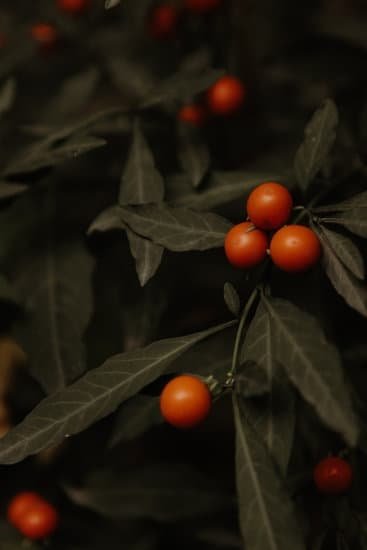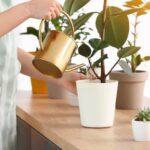Evergreen container gardening is a popular and versatile way to bring year-round color, texture, and life to any outdoor space. Whether you have a small patio, balcony, or large yard, evergreen plants in containers can easily add visual interest and a touch of nature to your surroundings. In this article, we will explore the possibilities of evergreen container gardening and provide valuable tips, creative design ideas, and sustainable practices to help you create a beautiful and thriving garden.
When it comes to evergreen container gardening ideas, the options are endless. From choosing the right containers and selecting the best evergreen plants for your space to planting and maintaining your garden throughout the seasons, there are numerous aspects to consider. With the right know-how and some creativity, you can create stunning container gardens that will last for years to come.
In the following sections, we will delve into the different aspects of evergreen container gardening, including tips for choosing containers and plants, creative design ideas for arranging your garden, seasonal care and maintenance practices, troubleshooting common issues that may arise, and sustainable eco-friendly practices to ensure the long-term health of your evergreen container garden.
Whether you’re new to gardening or have years of experience under your belt, there’s always something new to learn when it comes to creating a thriving and beautiful evergreen container garden.
Choosing the Right Containers for Evergreen Plants
When it comes to evergreen container gardening, choosing the right containers for your plants is crucial. The size, material, and drainage of the containers all play a significant role in the health and longevity of your evergreen plants. Here are some important considerations to keep in mind when selecting containers for your evergreen container garden.
Size Matters
The size of the container is an essential factor to consider when choosing the right containers for evergreen plants. Make sure that the containers provide enough room for the roots to grow and thrive. Containers that are too small can lead to root-bound plants, which can negatively impact their overall health and growth. Consider both the height and width of the container, ensuring it provides ample space for your chosen evergreen plants.
Material and Durability
The material of the container is also important, as it determines its durability and its ability to retain moisture. Terracotta, plastic, metal, wood, and fiberglass are common choices for evergreen container gardening. Each material has its own pros and cons in terms of insulation, weight, breathability, and aesthetics. Consider the climate in your area when selecting materials – terracotta may be prone to cracking in freezing temperatures while plastic may not hold up well in intense heat.
Drainage System
Proper drainage is essential for the health of evergreen plants in containers. Ensure that your chosen containers have sufficient drainage holes to prevent waterlogging and root rot. If you fall in love with a container that lacks proper drainage holes, you can always drill additional holes yourself or use it as an outer decorative pot with a fully-drained interior pot for planting.
By carefully considering the size, material, durability, and drainage system when choosing containers for your evergreen plants, you can set them up for success and create a beautiful and thriving container garden that will last for years to come.
Selecting the Best Evergreen Plants for Containers
When it comes to selecting the best evergreen plants for containers, there are a few key factors to consider. From size and growth habits to light and water requirements, choosing the right evergreen plants for your container garden is essential for their health and overall success. Here are some important considerations when selecting the best evergreen plants for your container garden.
Size and Growth Habits
One of the first things to consider when selecting evergreen plants for containers is their size and growth habits. Choose plants that will not outgrow their containers too quickly, as this can lead to root-bound plants and a need for frequent repotting. Look for compact or dwarf varieties that are well-suited for growing in containers, such as boxwood, holly, or dwarf conifers.
Light and Water Requirements
Consider the sun exposure and watering needs of your chosen evergreen plants. Some varieties may prefer full sun, while others thrive in partial shade. Similarly, some evergreens may require more frequent watering, while others are more drought-tolerant. It’s important to match the light and water requirements of your chosen plants with the conditions in which they will be grown.
Hardiness Zone Compatibility
Before selecting evergreen plants for your container garden, check their hardiness zone compatibility with your local climate. Ensure that the plants you choose can withstand the temperature extremes in your area, especially if you plan on overwintering them outdoors in their containers. Selecting evergreens that are suitable for your region’s hardiness zone will help ensure their long-term survival and health.
By considering these factors when selecting evergreen plants for your container garden, you can create a beautiful and thriving display of year-round greenery that brings joy to any outdoor space. Whether you opt for traditional boxwood or vibrant heathers, there are plenty of options available to suit different preferences and growing conditions.
Tips for Planting and Maintaining Evergreen Container Gardens
When it comes to planting and maintaining evergreen container gardens, there are a few essential tips to keep in mind. Whether you’re a novice gardener or have some experience with container gardening, these tips will help you create a beautiful and thriving evergreen garden.
First, it’s important to choose the right potting mix for your evergreen plants. Evergreens typically prefer well-draining soil, so look for a high-quality potting mix that contains perlite or vermiculite to ensure good drainage. Additionally, consider adding some slow-release fertilizer to the mix to provide your plants with the nutrients they need to thrive.
Next, make sure your containers have adequate drainage holes at the bottom. Proper drainage is crucial for preventing waterlogged soil, which can lead to root rot in evergreen plants. If your chosen containers do not have drainage holes, you can always drill a few yourself to ensure proper drainage.
Once your evergreen container garden is planted, be sure to monitor the soil moisture regularly. Evergreens generally prefer slightly moist but well-drained soil, so avoid overwatering them. A good rule of thumb is to stick your finger into the soil – if it feels dry about an inch below the surface, it’s time to water.
Lastly, keep an eye out for any signs of pests or diseases in your evergreen container garden. Common issues such as spider mites or powdery mildew can affect evergreen plants, so inspect your plants regularly and address any problems promptly to keep your garden healthy and thriving.
- Consider adding some slow-release fertilizer
- Choose pots with adequate drainage holes
- Monitor soil moisture regularly
- Keep an eye out for pests and diseases
Creative Design Ideas for Evergreen Container Gardens
When it comes to evergreen container gardening, the design possibilities are endless. Whether you have a small balcony or a spacious backyard, there are numerous creative ideas to make your evergreen container garden visually appealing and functional. Here are some innovative design ideas to elevate your evergreen container garden:
One popular design idea is to mix different evergreen plant varieties in a single container. This creates an interesting and dynamic look, with various textures, colors, and heights that add visual interest to your garden. Consider combining different types of evergreens such as boxwoods, junipers, and conifers to create a diverse and visually appealing container garden.
Another creative design idea for evergreen container gardens is to play with the scale and proportion of containers. Utilize large, statement planters for taller evergreens like cypress or yews, and smaller containers for low-growing evergreens like creeping juniper or dwarf pine. This creates a sense of balance and harmony within the garden space.
In addition, consider incorporating other non-evergreen plants into your container garden for seasonal interest. For example, you can include flowering annuals or perennials that bloom at different times of the year to complement the permanent structure of the evergreens. This adds variety and color to your garden throughout the seasons while maintaining the timeless appeal of evergreen plants.
These creative design ideas for evergreen container gardens can help you transform your outdoor space into a lush and vibrant oasis that remains beautiful year-round. By experimenting with different combinations of evergreens and complementary plants in various sized containers, you can create a visually captivating garden that reflects your personal style and creativity.
Seasonal Care and Maintenance for Evergreen Plants in Containers
When it comes to seasonal care and maintenance for evergreen plants in containers, there are several important factors to consider in order to keep your garden thriving all year round. From watering and fertilizing to repotting and protecting from harsh weather conditions, taking care of your evergreen container garden requires regular attention and specific techniques.
To ensure that your evergreen container garden remains healthy and vibrant, follow these seasonal care and maintenance tips:
- Watering: Evergreen plants in containers require consistent moisture, especially during the warmer months. Water your plants regularly, ensuring that the soil is evenly moist but not waterlogged. During the winter months, be mindful of overwatering as the plant’s growth slows down.
- Fertilizing: Use a slow-release fertilizer or liquid fertilizer specifically formulated for evergreen plants. Fertilize your container garden in early spring and again in mid-summer to provide the necessary nutrients for healthy growth.
- Pruning: Regularly prune your evergreen plants to maintain their shape and size. Remove any dead or diseased branches as necessary, and trim back excessive growth to promote a fuller appearance.
In addition to these essential care tasks, pay attention to the specific needs of the evergreen plants you have chosen for your container garden. Some may require additional pruning or protection from extreme temperatures, while others may benefit from repotting every few years. By staying attuned to the seasonal requirements of your evergreen container garden, you can ensure its long-term health and beauty.
Lastly, be mindful of any pests or diseases that may affect your evergreen plants. Regularly inspect your container garden for signs of infestation or illness, and take appropriate measures to address any issues that arise. With diligent care and maintenance, you can enjoy a thriving evergreen container garden throughout the year.
Whether you are new to gardening or have been enjoying it for years now, these ever green gardening ideas will make a massive difference if applied consistently. It’s important not just for aesthetic purposes but also for ensuring that you give your plants only what’s best. Always remember that beautiful gardens do not happen by accident; it takes consistent efforts like those aforementioned above.
Troubleshooting Common Issues in Evergreen Container Gardening
Evergreen container gardening can be a beautiful and sustainable way to bring greenery and life to any outdoor space. However, like any type of gardening, it comes with its own set of challenges. In this section, we will discuss some common issues that gardeners may encounter when maintaining evergreen plants in containers and how to troubleshoot them.
One common issue in evergreen container gardening is root-bound plants. When the roots of your evergreen plant start to circle around the inside of the container, it restricts their ability to absorb nutrients and water. To prevent this, it’s important to repot your evergreen plants into larger containers as they grow. Look for signs such as stunted growth or roots visibly circling the inside of the pot.
Another issue that many gardeners face is overwatering or underwatering their evergreen container plants. Overwatering can lead to root rot, while underwatering can cause wilting and browning of leaves. The key is to establish a regular watering schedule based on the specific needs of your evergreen plant and the environmental conditions in your area.
Pests and diseases can also be a problem for evergreen container plants. Common pests include aphids, spider mites, and whiteflies, which can be controlled with insecticidal soaps or neem oil. Diseases such as root rot and powdery mildew can be prevented by ensuring proper drainage and air circulation around your containers. Regularly inspecting your plants for any signs of pests or diseases can help catch problems early before they become severe.
| Common Issue | Troubleshooting Tips |
|---|---|
| Root-bound plants | Repot into larger containers; look for signs of stunted growth or circling roots |
| Overwatering/Underwatering | Establish a regular watering schedule based on plant needs; observe environmental conditions |
| Pests/Diseases | Control pests with insecticidal soaps or neem oil; prevent diseases by ensuring proper drainage and air circulation |
By being aware of these potential issues and knowing how to address them, you can ensure that your evergreen container garden thrives throughout the year.
Sustainable and Eco-Friendly Practices for Evergreen Container Gardening
When it comes to evergreen container gardening, there are several sustainable and eco-friendly practices that can be implemented to minimize environmental impact and promote a healthy ecosystem. One of the best ways to do this is by using recycled containers for planting evergreen plants. By upcycling old buckets, barrels, or even tires, you can reduce waste and give new life to discarded items.
Additionally, using organic soil and natural fertilizers can contribute to eco-friendly gardening practices. Organic soils are free from harmful chemicals and pesticides, promoting the growth of healthy evergreen plants while minimizing harm to the environment. Natural fertilizers such as compost or worm castings provide essential nutrients to the plants without introducing synthetic chemicals into the soil.
Water conservation is another important aspect of sustainable evergreen container gardening. Consider using a rain barrel to collect rainwater for watering your evergreen plants. This not only reduces your reliance on treated water but also helps prevent runoff from carrying pollutants into local waterways.
Finally, promoting biodiversity in your evergreen container garden can have a positive impact on the local ecosystem. By incorporating a variety of plant species that support pollinators and beneficial insects, you can contribute to the overall health of the environment while creating a beautiful and thriving garden space.
| Sustainable Practice | Implementation |
|---|---|
| Recycled Containers | Upcycle old buckets, barrels, or tires |
| Organic Soil and Fertilizers | Use organic soil and natural fertilizers such as compost or worm castings |
| Water Conservation | Collect rainwater with a rain barrel for watering plants |
| Biodiversity Promotion | Incorporate plant species that support pollinators and beneficial insects |
Conclusion
In conclusion, evergreen container gardening offers a wealth of beauty and benefits for any home or outdoor space. The versatility and longevity of evergreen plants make them an ideal choice for creating stunning container gardens that thrive throughout the year. By carefully selecting the right containers and plants, as well as implementing sustainable practices, you can enjoy the rewards of a flourishing and eco-friendly garden space.
One of the main advantages of evergreen container gardening is the enduring beauty that these plants provide. Unlike seasonal flowers that come and go, evergreens offer year-round interest with their lush foliage and often colorful berries or cones. This means that you can create visually stunning displays in your containers that remain vibrant and attractive no matter the season. Additionally, evergreens can serve as a backdrop for other seasonal plants, providing a constant anchor for your container garden design.
Furthermore, evergreen container gardening offers numerous benefits for the environment and your overall well-being. These plants help improve air quality by filtering out pollutants and releasing oxygen, while also providing habitat and food for wildlife. Sustainable practices such as using organic soil and natural pest control methods contribute to healthy ecosystems in your garden space. Overall, evergreen container gardening provides not only aesthetic appeal but also long-term ecological benefits for both you and your surroundings.
In summary, evergreen container gardening ideas offer a multitude of possibilities for creating beautiful, sustainable, and low-maintenance garden spaces. Whether you’re new to gardening or a seasoned enthusiast, incorporating evergreens into your containers can add year-round interest while benefiting the environment. With careful planning, creative design, and proper maintenance, you can enjoy the enduring beauty and advantages of evergreen container gardening in your own outdoor oasis.
Frequently Asked Questions
Can Evergreens Survive Winter in Pots?
Evergreens can survive winter in pots, but they require some extra care. The biggest challenge is protecting the roots from freezing temperatures, so it’s important to choose the right pot and provide insulation.
What Is the Best Dwarf Evergreen for Pots?
The best dwarf evergreen for pots is a matter of personal preference and climate. Some popular choices include dwarf Alberta spruce, dwarf Hinoki cypress, and dwarf Japanese cedar. It’s important to consider your specific growing conditions before making a decision.
What Is a Disadvantage to Container Gardening?
A disadvantage to container gardening is the limited space for root growth. Plants in containers can become root-bound, which restricts their access to nutrients and water. Additionally, containers require more frequent watering and maintenance compared to garden beds.

Welcome to my gardening blog! I am passionate about plants and enjoy sharing my knowledge and experiences with others. In this blog, I will write about everything related to gardening, from tips on how to get started to updates on my own garden projects.





